History of racing motorcycles Vostok dedicated to Cosmonauts Day

The Soviets started to get really serious about motorcycle road racing in the 1950’s and 1960’s with the design and production of the Vostok, and deviated from the normal flat-twin and two-stroke engines with a series of inline Fours, similar to bikes like the MV Augusta of the time, yet the Vostoks were of solely Soviet origin and design.
The Central Construction and Experimental Department was set up in 1942 at Serpukhov, then a small town 100km south of Moscow within the Moscow Oblast. and was charged with research and development and overseeing design, engineering and production of Soviet motorcycles. Serpukhov Institute was later referred to as Vniimotoprom.
The Vostok racing models were called simply “S”, (or “C” in Russian), to mean Serpuhkov (see table below). On other “S” racers CKB, SKEB, or TSKEB designation was used, also the description “East”.
After the War the biggest motorcycle plant in the world at that time- DKW, came under Soviet occupation territory. Besides the newest machinery carried over to Izhevsk factory, Moscow and Kovrov, the USSR received all prospective and latest developments and research results in motorcycle industry of the time.
Meanwhile near Moscow a new Design department for motorcycles was established in Serpukhov (Central design and experimental dept.). It is important to note that in the USSR the queen of motorsport – road races were hardly justified and highly regarded, no actual racing motorcycle has been built except for TIZ (Taganrog machinery plant) – several samples copied from British Norton with overhead camshafts (digged into earth to avoid capturing by the enemy, when Nazi were near Moscow and remain there till nowadays). DKW designers preferred two-stroke engines as we know and as FIM requirements weren’t so strict at those times many sophisticaed devices were used to tune them up: various compressors, at first. And in order to time the phases well an unusual cylinder shape was used. It resembled a U-shape with two pistons – on enclosing exhaust ports before scavenging was over so it greatly improved cylinder filling with mixture. Next a U – shape cylinder with two pistons and two separate, but connected crankshatfs was developed. The crankshafts were connected with gear on their flywheels so it made adjusting timing much easier, then U-shape cylinder had a smoother bending and angle of about 26 degrees which made less hinders for fuel mixture to travel from one part into another (left was used for exhaust phase and right – for intake).
In 1946 a new engine of this type was built by Central design department – a 350cc two-cylinder, two-stroke engine with power output 42,5 hp installed on a car called “Zvezda-3″(star-3) and set a union record of 172,527km/h (more than a world’s record at that time of this car class – 169,17km/h). Soon followed a motorcycle engines line of C1V (125cc), S2B (250cc) and S3B (350cc). The motorcycle S2B with 248cc engine, 40hp at 7000rpm passed tests in 1950 and set 5 USSR records reaching top speed of 174,503km/h.

As the USSR motorsport wished to enter many international competitions, by that time compressors were banned so designers made a new similar type line of engines: S-154 (single cyl.), S-254 (2-cyl.), S-354 and S-555 (500cc). These 4-stroke engines represented all latest developments in the field: double overhead camshfts driven by conic gears, aluminium cylinders with cast iron sleeves, assembled crankshafts, long lever fork types, double rocker front brakes, duplex frames similar to “Featherbed” and uncommon decision for racing motorcycles – shaft final drive.

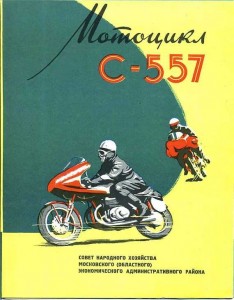
It was in summer 1957 when these motorcycles first appeared at Grand-Prix held in Finland greatly impressing all foreign experts and motorcycle press. A British journalist from “Motor cycling” magazine commented no one expected a small town of Serpukhov to make a world -class motorcycles with all mechanisms made in USSR.
Although the two best racers Sevastyanov and Kulakov didn’t show good results , the Soviet authorities were full of optimistic expectations, saying that we will make a world-class motorcycle on par with the best examples from Italy, Britain and Germany.
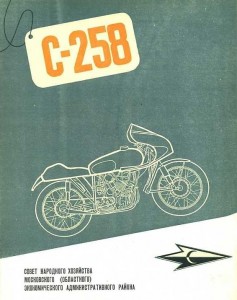
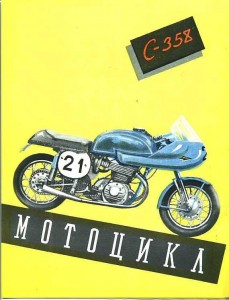
The West was sure that most recent developments were draining to East, while it was that Jawas and CZs were showing considerable advances forward in their design…
Next year a co-operation treaty was signed with two Czechoslovakian huge plants: Jawa and CZ. This saw the Jawa 250 relabelled S-259 and the Jawa 350 the S-360. These bikes have been referred to as Jawa replicas. Some Jawa used Soviet made components.

At the ridge of 1950-1960’s a new series of racing motorcycles was made: S-159 (1-cyl. 125cc), S-259 (250cc) and S-360 (350cc). 11 May of 1961 was a great day for Soviet motorcycle sport, as Nickolai Sevastyanov came 3rd in Grand-Prix race of Finland with S-360. Next year, 1962 in Eastern Germany championship the Soviet racers were 5th in “250″ and 6th in “350cc” categories, which was not bad for a debut.
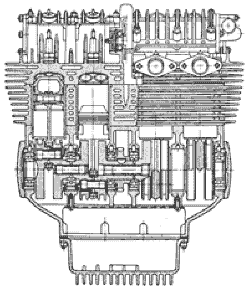

The thunder struck in 1964 when a special racer from Serpukhov appeared at races: 4-cylinder, 4-stroke S-364 (350cc) equipped with short stroke (49x46mm) engine with double overhead camshafts and 6-speed gearbox. Test stands showed an output of 59 hp at 13000 rpm, while best competitors had 51 hp -MV Agusta and 54hp – Honda. Both Sevastyanov and Endel Kiisa came off track during race as their pistons destructed, while Sevastyanov took 4th place in “500cc” category with bored to 352cc same S-350 motorcycle and Kiisa (Estonian) took 3rd place in a world championship tour for the first time for the USSR.
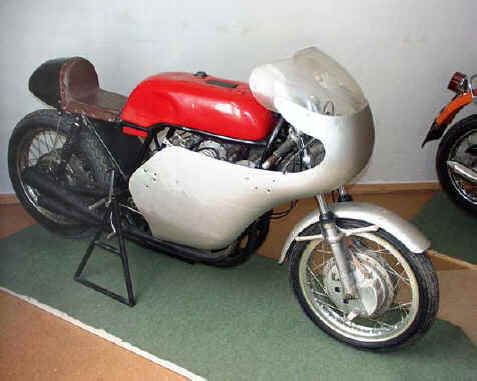
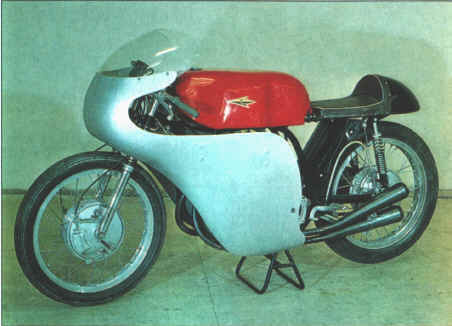
The British magazine “Motorcycling” drew a conclusion of the season: “with new motorcycles the Soviets have shattered our western races results confidence and they represent a serious rival for next racing season”, naming the motorcycles “Vostok” and so referred after that.

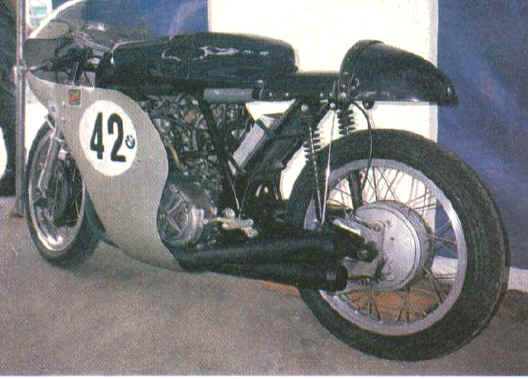
Why this bike has a BMW sticker is unknown, there is no known connection, perhaps there was?
Next races were less successful for the Soviet team – in most cases they came off track due to breakages. The red tape took its turn and cut down financing in foreign races instead of increasing it to stimulate expected improvements…
It was only in 1968 when Vostoks were next seen at international races in Finland with a 500cc “S-565″, which in its design resembled a 350cc model, while it had a more sturdy chassis and 3 valves were put into each cylinder (2 intake, 1 exhaust). Kiisa was leading in the race for the whole lap when Giacomo Agostini took over and Kiisa came off track and Sevastyanov finished in 4th place. It was the last race for the USSR. No one saw Vostoks afetrward till veteran races in 1990’s.
It was a crime to invest huge money into development of racing motorcycles and not support racing programme in its course financially, but that was a paradox of Soviet bureaucracy of the time. One unfamiliar with racing achievements and knowing a common series of “work horses” would never believe that such motorcycles existed at all. High ranking sport events were an experimental lab for many motorcycle makers to test their developments in design and best advertising means. But nothing from that was borrowed to be used in conveyor production since, and with iron curtain and absence of export it was ridiculous to talk of advertising, unless it was a sort of country’s prestige timely rise?… With the change of country’s ruling chairmen in Khrushev’s epoch all Soviet machinery showed no interest in motorcycle racing at all and it was so little to refine the Vostoks design to take at least 3rd places in all main races… The project was doomed to be forgotten.
Some Czechoslovakian took a trial and won silver and bronze medal at races with their motorcycles but only once. In general the leading in bigger cc 350 and 500 was MV Agusta, while Honda attempted to compete only once, the rest of rivals were riding Norton, AJS, and obsolete British-school design BSA…
If we imagine that the programme of Vostok was financed well to be refined we could expect at least 3rd places in the races from start and then? A first place? Maybe. If we had such race results and achievements in motorcycle races nowadays…
©Translated by Eugene Radchenko, Russia, especially for us here at bcozz site.
further notes:

Model designation followed a simple pattern, the 1st digit was the class, 1 was 125, 2 was 250, 3 was 350 and 5 was the 500cc. The next two digits were the year. So a S-358 was a 350cc built in 1958. There were some exceptions. There was also the S-Series 175cc, but that is another topic.
The only true Vostoks were the four-cylinder models S-364 and S-565. Juris mentions a S-564 and 569. All the others were just S (Serpukhov), CKB, or Jawa. It is reported there was a prototype 250 four-cylinder engine that never made it.
Vostok means sunrise in Russian, and is universally well known as when Juri Gagarin became the first human being to orbit the Earth aboard the Vostok-1 spacecraft the word Vostok became a household name.
I was at the Finnish GP in 1968, and saw and heard! the Vostok. It made tremendous noise and was fast. If it had been piloted by a top-notch rider, Ago would have been pressed hard. – pkr2000dk
They had made 500cc fours and 350cc fours. My 500cc four went to the Barber Vintage Motorsports Museum in the USA, but still have a 350cc Four – which needs an extensive rebuild. The ones they pushed to “walk the plank” and smashed on concrete were mostly TSKB singles and twins, and they were not Vostoks. Vostoks were only the fours and much later water cooled motocross singles. They made about 5 in 2 batches of the 500cc versions 564 and 569 models and several dozen 364 models – the 350ies. Both with “ featherbed” type and “diamond” type frames. – Juris Ramba
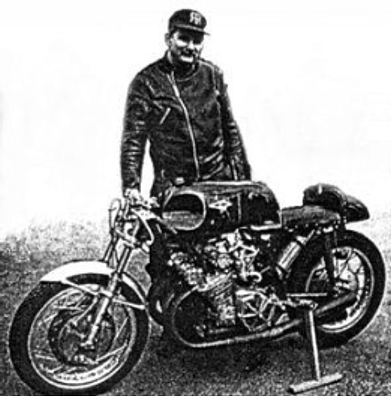
Juris Ramba with his 500cc Vostok-4 taken at the Isle of Mann in 1989
While the Vostoks did well in USSR Championships and non-GP races, their only top placings in GP leaderboards were both with Sevostianov getting 3rd place on a 350 at the 1965 Czech Road Racing World Championship Grand Prix and coming 4th on a 500 at the 1968 Finnish GP. The Soviets then abandoned their Grand Prix asperations, but Vostoks continued to turn up at USSR, Finland and other Eastern countries races.
Several examples of S racers have survived. The Riga Motormuseum Mezciems in Riga, Latvia has the most impressive collection with a C-154 engine number 001, a C-254 and a C-358 on display. A baker’s dozen of other Serpukhov “S” racers are in the hands of private owners in Estonia, Latvia, and the UK.
But this page is about and to tell of the four-cylinder Vostoks. Nowadays a racing Vostok-4 is a very rare thing and for now only four Vostoks are accounted for, three in private hands in Russia, Latvia, and Finland, and one in the Barber Motorsports Museum in the USA. There may be others that one day may come to light.
Nothing to do with Vostoks but VNII Motoprom in Serpukhov did some serious R&D
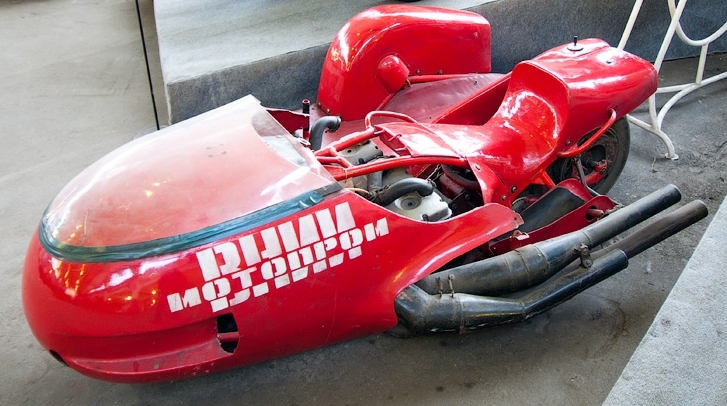
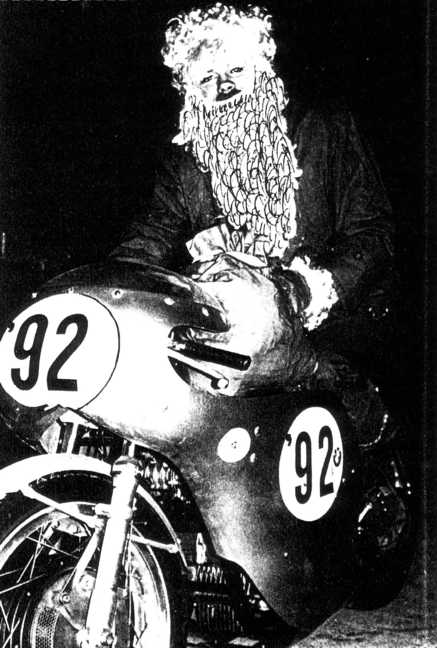
and yes, Santa (Juris) rides a Vostok!

Sources:
- Special thanks to Mr Juris Ramba, Latvia
- Special thanks to Mr Boris Dempchenko, Editor, Moto Moscow Russia
- Special thanks to Mr Raymond Ainscoe, author of the book “The Vostok Racers” for supplemental comments and notes
- Roy Bacon, Foreign Racing Motorcycles
- B-Cozz archives
- Special thanks to Francis Gebus, France, for the covers
